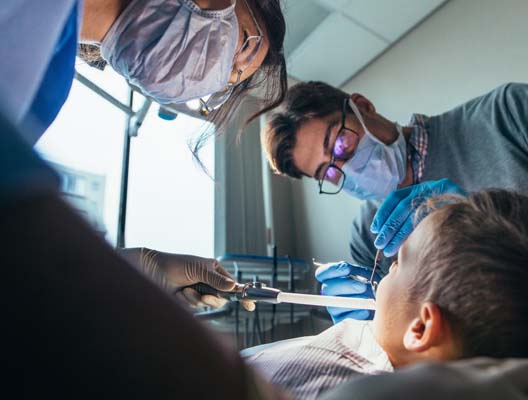Kids Orthodontist: What Is Phase One?

Early interceptive therapy, also known as phase 1 orthodontics, is performed by a kids orthodontics and deals with the application of growth appliances, expanders, or partial braces, pending the complete eruption of the patient’s adult teeth. Phase one treatment is usually recommended for children when they are between 7 and 11 years old. The treatment duration ranges from 11 to 14 months.
The purpose of phase one orthodontics
Many factors might drive a kids orthodontist’s decision to recommend phase one orthodontics. There may be a need to expand and correct the child’s jaw to accommodate the adequate eruption of permanent teeth and improve the alignment of the lower and upper jaws. Early interceptive treatment during childhood might help patients avoid major oral health issues in adulthood, such as tooth trauma or jaw surgery.
Another purpose may also be to prevent crossbite, overcrowding, severe overbite and underbite, the premature loss of baby teeth, and detrimental oral habits in young children. The treatment is essentially done to lay a stable and responsive foundation for a child’s developing permanent teeth, which is less challenging when the child is younger.
Baby tooth difficulties may typically lead to issues in all of these areas, and without early care, these issues will likely require more extensive and lengthy therapies to resolve. The goal of phase one orthodontics is to mitigate and rectify present orthodontic issues in order to prevent and reduce future issues.
Candidates for phase one orthodontics
The dentist may recommend the treatment if the child has protruding teeth; crooked, crowded, or spaced teeth; a misaligned bite; speech issues; breathing challenges; disproportionate jaw; eruption issues caused by baby teeth; and habits that affect oral development, such as thumb sucking.
Children who do not have any of these symptoms can still undergo phase one orthodontics. A child’s mouth is always changing and developing, so just because they do not require orthodontic treatment today does not mean that they will not in the future. Pediatric dentists use early orthodontic appointments to determine when and whether a child will require orthodontic treatment. The kids orthodontist will be able to obtain the best outcomes with the least amount of work by precisely scheduling your child’s treatment.
Additional points to note
Since children's facial bones are not fully grown yet, orthodontic therapy is considerably simpler and quicker. With phase one orthodontics, the dentist can prevent future issues from arising and help give the child a healthy smile.
A child should continually be assessed and treated by a qualified orthodontist. They will have a better grasp of the child’s situation and can tailor their therapy to their specific needs for optimal results.
In conclusion
If your child is around the age of 7 and has crowding or spacing issues, you can start by having them undergo an orthodontic examination to get the care that they require. One simple visit might make a significant impact on their dentition. Please contact the dental office immediately to book a consultation with the kids orthodontist.
Request an appointment here: https://www.gckidsdmd.com or call Gentle Care Pediatric Dentistry & Orthodontics at (914) 930-4465 for an appointment in our Peekskill office.
Check out what others are saying about our dental services on Yelp: Orthodontics for Children in Peekskill, NY.
Related Posts
Routine visits to a dentist for kids lay the foundation for a lifetime of healthy smiles. Pediatric dental care is carefully structured to meet the developmental needs of children, offering a combination of preventive and restorative services that grow with them. With tailored guidance and techniques, a dentist for kids can preserve oral health and…
Sedation dentistry offers a safe and effective solution for children who experience anxiety, fear, or difficulty remaining still during dental procedures. By creating a calm and stress-free environment, sedation dentistry allows pediatric dentists to complete necessary treatments while ensuring children remain comfortable. Understanding the types, benefits, and safety measures can help parents make informed decisions…
Infants can benefit from seeing a pediatric dentist when primary teeth begin to erupt. Primary teeth are placeholders for permanent teeth and should receive the same attention, including appropriate home care. Primary teeth are crucial to a baby's health and development. Therefore, dentists encourage parents to begin an infant's oral hygiene routine as soon as possible…
Going to an emergency pediatric dentist can give your child immediate dental needs. Treating urgent dental issues can provide relief right away. It can also prevent complications. Here are the necessary steps that you can take even before the drive to your emergency pediatric dentist.Showing distress will only intensify the child’s anxiety. This will make…
